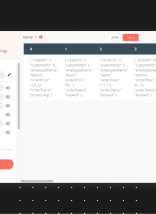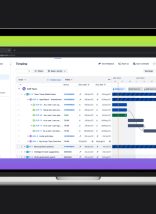While visuals are a prominent piece of website interaction, user experience design goes far beyond aesthetics. UX professionals go deeper, seeking to create experiences that meet user needs and connect their interactions with business goals.
Ideally, this process begins with user research. During this phase, a user researcher and their team will dig into the real-life tasks and pain points that people experience. After gaining a thorough understanding of user motivations and behaviors, the team will then design products to help meet business goals while solving real-life problems of the target market.
When resources are limited, rely on a Lean UX Canvas.
Not every project can follow an in-depth user research process. Common reasons for trimming it down include lack of budget, difficulty accessing representative users, or a limited project timeframe.
When resources are limited, you shouldn’t throw UX principles out the window. Instead, we recommend a workshop technique called the Lean UX Canvas. The canvas was created by Jeff Gotthelf, and it just so happens that he recently released the Lean UX Canvas V2.
How does a Lean UX Canvas work?
First, a Lean UX Canvas is used to help teams recognize their core business problems and break them down into key assumptions. Then, these assumptions can be reworked into hypotheses for future testing.
A Lean UX Canvas creates a foundation for running useful tests that reduce risk and drive smarter UX decisions.
Tips for a successful Lean UX Canvas:
A skilled facilitator can guide you through the canvas pretty quickly. Participants and stakeholders should keep the following principles in mind:
- You are not your user; their perspectives are often different.
- Don’t get too far ahead of yourself. This isn’t visual design, but if you get this part wrong the visual design won’t matter.
- Be careful with your assumptions! You have to make them, but keep yourself as grounded as possible by whatever data or knowledge you have. It’s great to propose that your tool will save the world, but being unrealistic will cause problems later.
- Making changes is okay. The canvas should be a flexible document. Just because something gets written down in a workshop doesn’t mean it is set in stone – in fact, it should reflect new information as you learn.
Ready to get started?
Atlantic BT has experience with Lean UX Canvases, along with full-fledged user research and testing. Contact us if you’re interested in seeing how we can help you.






